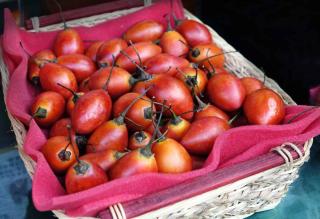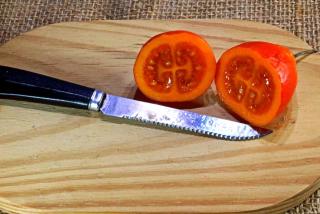

Cyphomandra is a fruit tree native to the tropics. It bears delicious fruits with firm flesh and a tangy taste.
Key cyphomandra facts, a summary
Name – Solanum betacea (formerly Cyphomandra betacea)
Common names – tomato tree, tamarillo
Family – Solanaceae or nightshade
Type – fruit shrub
Height – 3 to 13 feet (1 to 4 m) (in its natural environment)
Exposure – full sun or well-lit when indoors
Soil – light, rich enough
Harvest – summer, let fruits ripen on the plant.
Here is how to grow it at home.
Under our temperate latitudes, the tomato tree is grown outdoors only in areas where the climate is mild enough in winter, because this shrub dies if temperatures drop below 26°F (-3°C).
It can thus be grown along the Atlantic and Pacific coasts, around the Mediterranean, and even in these regions will need protective winter coverings.
If you fear that temperatures fall below freezing in winter, you don’t have a choice but to grow your tomato tree in a pot so that you can protect it over the winter.
It doesn’t resist freezing, so tomato trees must be grown as if they were citrus, bringing them in a greenhouse over winter.
If you choose to grow tomato trees indoors all year round, you’ll have to organize its dormancy at some point during the winter.
It is a fruit tree that requires a lot of water in summer, especially in case of high temperatures.
Water daily if ever a dry spell hits.
Apart from watering, it is relatively easy to care for the tree in winter and in summer.

If not yet mature, it doesn’t taste so good, and if too young it even becomes difficult to digest.
If the fruits aren’t ripe enough upon harvest, you can let them ripen just like regular tomatoes before eating them.
Native to Peru, it is well-known thanks to its red or orange-pink fruits, that resemble plums even though it belongs to the tomato family.

This fruit is also often savored juiced. Another name for it is “tomato tree“.
The world’s largest producer is Columbia, in South America, which explains why this fruit tree has trouble growing out doors in more temperate climates.
To grow it outdoors, try to find the Cyphomandra corymbiflora variety because it is hardy down to 19°F (-7°C), if in full sun and sheltered from wind.